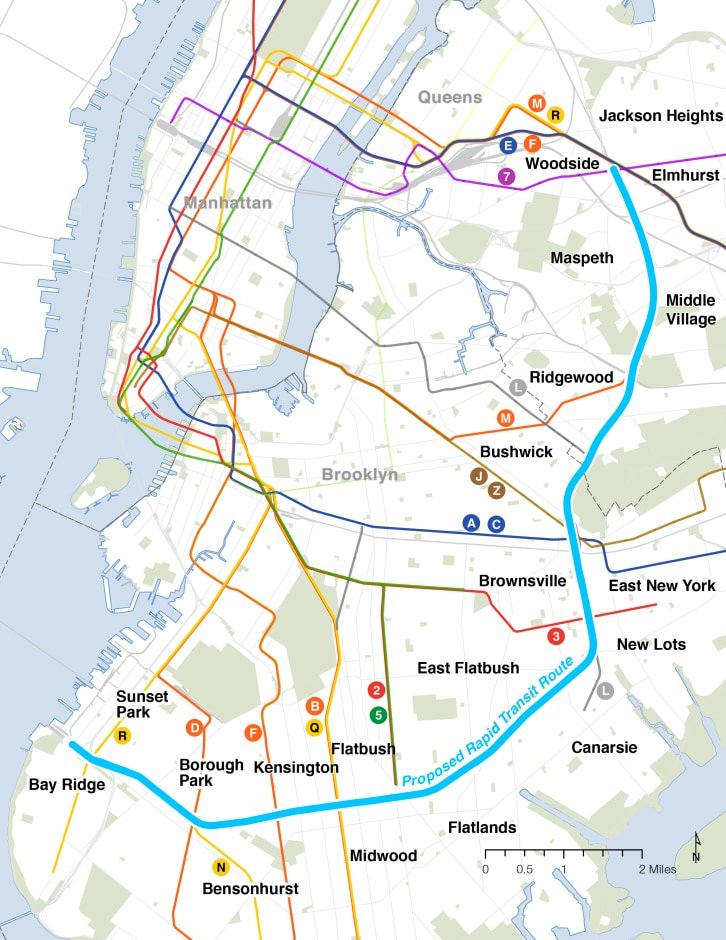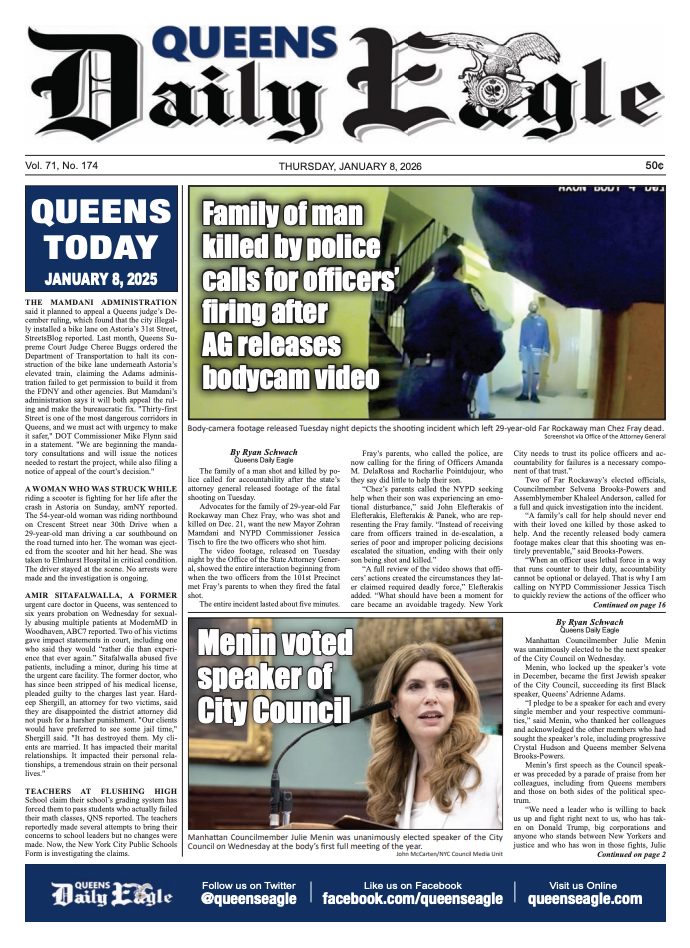MTA shares Interborough Express details
/The MTA held a town hall on Wednesday to discuss the Interborough Express. Map via the MTA
By Ryan Schwach
During an hour-long presentation, the MTA gave the public new details and updates on the planned Interborough Express, the potentially transformative railway project to connect Brooklyn and Queens.
Members of the MTA’s Regional Planning group held a virtual town hall meeting on Wednesday night to share details and answer questions about the IBX, which plans to construct a new train route from Bay Ridge, Brooklyn to Woodside, Queens.
“The Interborough Express would provide a transformative new transit connection between Brooklyn and Queens,” said MTA Senior Vice President of Regional Planning, Michael Shiffer.
The IBX, proposed in January 2022 has a $5.5 billion price tag in 2027 dollars, and according to the MTA could potentially serve 115,000 daily riders from all over the two outer boroughs.
“Part of the reason why this is such an exciting project…It's an exceptionally diverse study area, as you would imagine looking at the center of Brooklyn and Queens,” said Shiffer. “You've got a very diverse population, and you've got a population that could really use the mobility that this could provide.”
Shiffer says that around half a million people live within a half mile of the right of way line the IBX will be using.
“Many more people will benefit from the line by transferring from subways and other local transit services such as buses and Long Island Railroad,” said Shiffer.
Shiffer went into detail on the light rail mode that the IBX will use, which is different from “conventional rail” which is what regular subway cars use.
Shiffer describes light rail, which was announced as the IBX’s mode in January, as “modern descendents of the trolleys and streetcars of the past,” and was selected due to its cost, speed and adaptability.
“We chose light rail and the reason why we chose it is because based on a number of factors…it provided the best value for our customers and the best service as well,” Shiffer said.
A question was asked regarding what would happen if the usage is higher than anticipated, and Shiffer explained that light rail makes it easier to adapt.
“Each train of two units to multi-section units for you to put them together, you could have 360 passengers that's expandable to a third unit if you need to expand your capacity in the future,” he said. “The benefit of light rail is that it can operate at very high frequency, that can operate up to, maybe a five minute interval between trains. Sometimes it'll be a little longer…but the beauty of light rail is that it is very adaptable.”
Speed is another major factor, as Shiffer said that it should take 39-minutes to go from end to end, from Jackson Heights to Bay Ridge.
“This can offer significant time savings for many people and we know there are so many different folks traveling in so many different ways throughout Brooklyn and Queens,” he said.
Currently, to get from Brooklyn Army Terminal to the Roosevelt Avenue Jackson Heights train station, it will take two trains and about an hour of commute time.
Although, Shiffer suggested it is more likely people are not riding it from end to end.
“Very few people would ride all the way, and you're not necessarily riding from Jackson Heights to Bay Ridge, you're riding intermediately through various parts of the line connecting to subway lines and buses and so forth,” he said.
As of right now there are 19 proposed stations, which will connect to various other transfers.
“We were heartened to see over 1,000 people drop pins on the electronic map of where they would like to see the stations,” said Shiffer. “It was no surprise that many of the places where the public wanted to see the stations were where it would make sense, and that was intersections with subway lines and major arterials.”
Shiffer says those stations are not set in stone, and is subject to change as the project progresses.
Of course, the monumental project has a lot of complications.
Although the IBX will use an existing right of way, there still needs to be reconfiguring to make it work.
“You can't just throw a couple of transit tracks down next to the freight,” said Shiffer. “It really needs to be reconfigured. It doesn't mean we're going to move outside of the bounds of the right of way, but what it means is that the right of way itself may need to be reconfigured.”
This will also mean the expensive process of building 45 bridges along the way.
“You have a lot of complexity throughout this right of way,” said Shiffer.
The right of way will also move into the street for a section, which light rail allows them to do.
“It's not without its challenges,” Shiffer said. “Whenever you have areas where vehicles and trains sharing the right of way are in close proximity, you need to pay a lot of attention to traffic engineering.”
A rendering of a potential light rail IBX track. Via the MTA
The MTA hopes to hold more public hearings and town halls as the project moves forward with the environmental impact study in the coming months.
“We need your support, and we need your engagement,” said Shiffer. “We need you to explain to us some of the key constraints and things that the designers, the planners and the engineers need to be aware of from a community perspective.”





